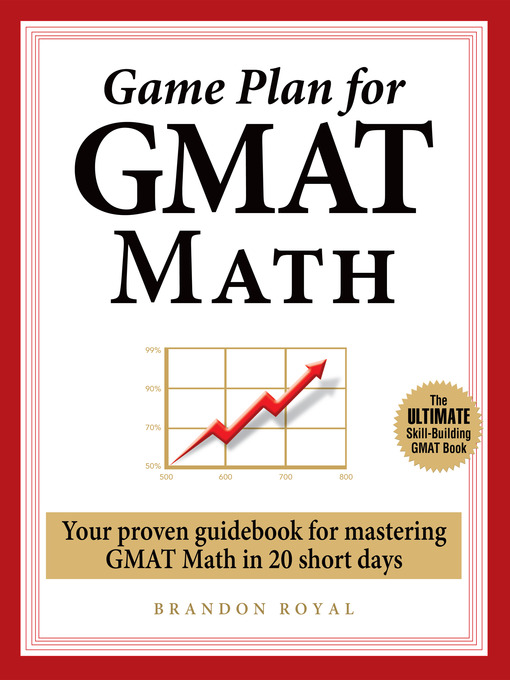A Treasure Trove of Tools and Techniques to Help You Conquer GMAT Math
Game Plan for GMAT Math will help readers develop the skills and mindset needed to score high on the quantitative section of the GMAT exam. This book contains the excerpted math chapters on Problem Solving and Data Sufficiency as taken from the ebook/parent paperback titled Game Plan for the GMAT: Your Proven Guidebook for Mastering the GMAT Exam in 40 Short Days.
Whether you're a candidate already enrolled in a test-prep course or are undertaking self-study, this book will serve as a rigorous skill-building study guide to help you conquer the quantitative section of the GMAT exam. Studying for the math section of the GMAT exam requires some 50 hours of study time. This book's content is conveniently divided into topics, which require two to three hours of study time per day. Total study time will vary between 40 to 60 hours for the entire 20 days.
Secret Recipe: Each hand-selected problem comes with a classification, snapshot, and chili rating. Classification serves to identify each problem according to category or sub-category. Snapshot highlights why that particular problem was chosen, including the underlying problem-solving principle or strategic approach. Chili rating helps candidates gauge the estimated difficulty level of a given problem. A single chili indicates that the estimated difficulty level of a given problem is "mild" (500 to 590 difficulty level), two chilies spell "hot" (600 to 690 difficulty level), and three chilies signal "very hot" (700 or above difficulty level). By practicing with problems of varying levels of difficulty, candidates will learn to maintain discipline when solving easy but tricky problems and also to exercise flexibility when tackling harder problems. These latter problems require that a test-taker choose the best approach and look for time-saving shortcuts.
"This author's approach enabled me to increase my score from 650 to 730. The book's unique way of categorizing each type of question, giving insightful tips to master these problems, as well as the detailed analysis for each set of problems were key factors in my cracking the test. Moreover, I found in his materials, problems that I did not find anywhere else and which were critical on the D-day when answering a few extra questions right made the difference between a good score and an excellent one." –Cedric Gouliardon, Telecom Specialist; INSEAD graduate

